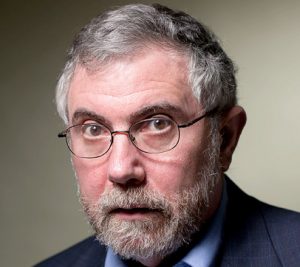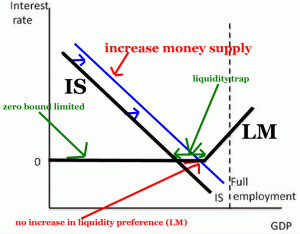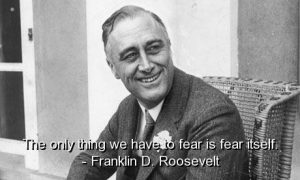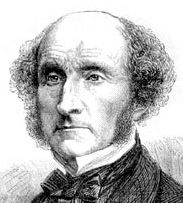So we’re stuck in a liquidity trap and there’s no way out. And we can’t get to full employment, no matter how low we drive interest rates. We may even have to jump down that rabbit hole of negative interest rates. Oh my! But wait – we’ve got Sir John Maynard Keynes’ magnum opus of modern economics, The General Theory of Employment, Interest and Money. And even better, there’s Nobel Prize winning economist Paul Krugman with his own take on Sir John’s theories to get us out of this mess! Krugman and Keynes; whew, what a relief! We need fiscal spending! But maybe that hoped-for infrastructure spending was unnecessary after all?
Thesis: Infrastructure Spending was Unnecessary
The state of the economy in January, 2017 proves that infrastructure spending was unnecessary to escape the Great Recession. It is not, per se, necessary to get out of a recession and create full employment. A liquidity trap, as defined by Mr. Krugman, can be escaped without a heavy dose of infrastructure spending. Large infrastructure spending programs are not a universal salve in all economic crises. Krugman and Keynes were wrong.


What is a Liquidity Trap?
First, Mr. Krugman’s definition. We were in a “liquidity trap”, “a situation in which conventional monetary policy – open-market purchases of short-term government debt – has lost effectiveness.” Elaborating, a liquidity trap occurs when “private demand is so weak that even at a zero short-term interest rate spending falls far short of what would be needed for full employment.” Succinctly, according to Mr. Krugman, the economy is in a liquidity trap when even zero interest rates fail to restore full employment.
In fairness to other arm-chair economists, Mr. Krugman’s definition doesn’t quite fit Mr. Keynes’ textbook. Now for Mr. Keynes’ definition, as stated in the General Theory:
[A]fter the rate of interest has fallen to a certain level, liquidity-preference may become virtually absolute in the sense that almost everyone prefers cash to holding a debt which yields so low a rate of interest. In this event the monetary authority would have lost effective control over the rate of interest.
Krugman calls it a case of conventional monetary policy losing its effectiveness; when zero interest rates can’t create full employment. Keynes believed that a liquidity trap occurs when the central bank can’t control interest rates and, therefore, can no longer influence the price of other assets.
Were We in a Krugman Liquidity Trap or a Keynes Liquidity Trap? Or Neither?

No Keynesian Liquidity Trap
In Mr. Keynes’ world, a liquidity trap occurs when interest rates have fallen to a level where people simply want to hold cash. Perhaps (and likely) fear drives them to that conclusion. But that’s it. At that point, a further decline of interest rates would fail to cause people to buy debt.
Were we in that world in 2009 and thereafter? No. As the Federal Reserve lowered short-term interest rates and then applied quantitative easing, all interest rates fell in response. The public demand for bonds continued unabated. And although short-term interest rates effectively fell to zero, there was no Keynesian liquidity trap. The proof for this is that continued demand for bonds; the public did not opt to hold cash. No Keynesian liquidity trap.
No Krugman Liquidity Trap Either – Not Really
Now to Mr. Krugman. In his world a liquidity trap occurs when conventional monetary policy is no longer effective. It is the case where a zero short-term interest rate fails to generate enough private demand to get to full employment in the economy.
Were we in that world in 2009 and thereafter? Yes, but then no. In the immediate aftermath of the 2008 collapse the economy quickly neared that point. During 2009 the Federal Reserve dropped short-term interest rates to near zero (twenty-five basis points, where it stayed until late 2015). Unemployment in the United States peaked at ten percent in October, 2009. So, in late 2009 we were in Mr. Krugman’s liquidity trap. Or so it seemed.
But beginning in early 2010, that began to change. The unemployment rate started its steady decline and now sits at just 4.7%. All of that occurred as short-term interest rates remained essentially steady. So, it appears that Mr. Krugman’s liquidity trap, if it existed at all, lasted for only a moment or two. But it didn’t last very long.
Infrastructure Spending Was Unnecessary – We Didn’t Need it To Escape Either Liquidity Trap
Infrastructure spending was not really an issue for Mr. Keynes’ liquidity trap. We were never in one in the first place. However, government (fiscal) spending is a tenet of his classic theory to pull an economy out of recession or depression. Although a fiscal stimulus package was passed shortly after President Obama took office, it was not very big and didn’t last very long. Yet the economy recovered to full employment anyway. So it appears the infrastructure spending was unnecessary to address Mr. Keynes’ general observation regarding recessions.
In Mr. Krugman’s case, his claim of liquidity trap, it turns out, was too myopic. At best, we were in his trap at the first moment – when short-term interest rates were lowered to 25 basis points while unemployment peaked at ten percent. His clarion call for a grand infrastructure spending program then went unheeded. Yet, the economy recovered to (arguably) full employment anyway. He reacted too quickly, it turns out, at a time when the economy needed time to heal its own wounds.
We look to former Chairman Bernanke on whether we may still need infrastructure spending to further heal the economy:
The case [for infrastructure spending] is weaker now because we’re closer to full employment. There is still a case for fiscal policy but it’s less in terms of large amounts of spending and more in terms of smarter policy. Infrastructure makes sense . . . not so much now as before in terms of job creation, but because America’s infrastructure is not as good as it should be.
So, it turns out, infrastructure spending was unnecessary to save the economy in 2009. And we don’t need it now. It may be a good idea for general policy purposes, or not. That is a debate for another time.
A Non-Economist’s Perspective: Healing Fear in the Human Psyche is Easier in the Internet World
It’s all about human behavior, isn’t it? The research of Daniel Kahneman, winner of the 2002 Nobel Prize in Economics, shows that people fear loss more than they enjoy success; fear is more powerful than greed. In the context of a recession, the goal is to avoid the so-called “negative feedback loop” where fear overwhelms optimism. A cycle of despair accompanied by a withdrawal of consumer spending, resulting in a deep recession.
We suggest that the first, and most important, task in any economic emergency is to contain fear. FDR knew it. It’s all about convincing the public that they will be all right. Once that fear is contained, healing begins, both in the human psyche and in the economy. It’s all about the message and the messaging.

In times of fear the public looks to its leaders for comfort and reassurance. They listen to their leaders words, and watch their leaders actions. Each circumstance dictates what the message should be, and the actions needed to convey that message.
Now it may be that, in a particular circumstance, fear can best be assuaged by a government spending program. On another occasion, it may be assuaged by adjusting interest rates. Or it may be that appointing particular individuals to key leadership roles will have the needed calming effect, etc. Who can predict? In the 2009 instance, infrastructure spending was unnecessary. But in all cases, we suggest, messaging is critical because it’s all about calming fear and regaining confidence. And in today’s world, communicating the message has never been easier.
In 2009, the key was Chairman Bernanke and others convincing the public that the Federal Reserve would do whatever was necessary to heal the banking system and the economy. The reaction of the stock market, starting with the immediate price recovery in March, 2009, proves that it worked. Infrastructure spending was unnecessary to end the decline. Nor was infrastructure spending the cure to cause the economy to reach full employment.

